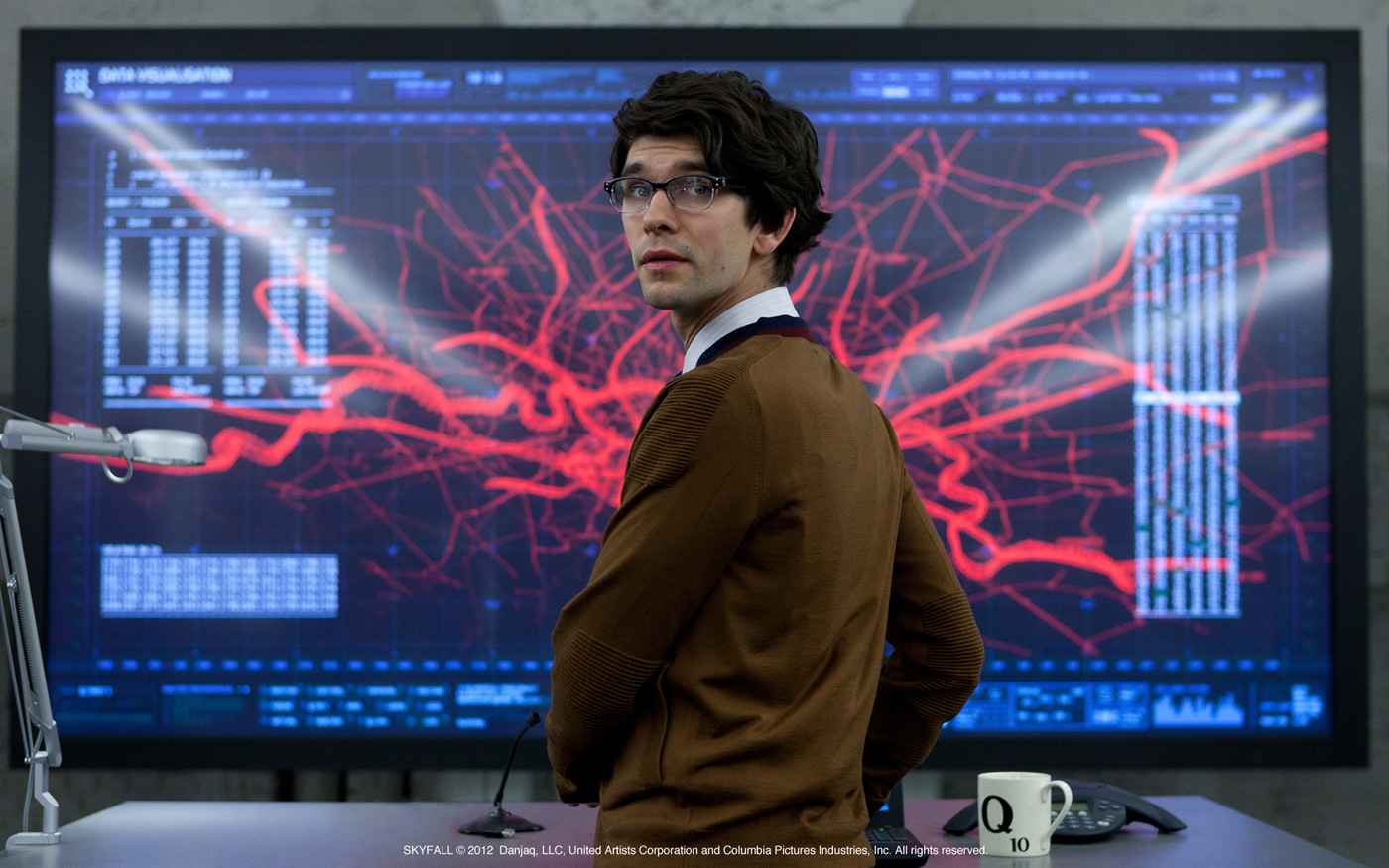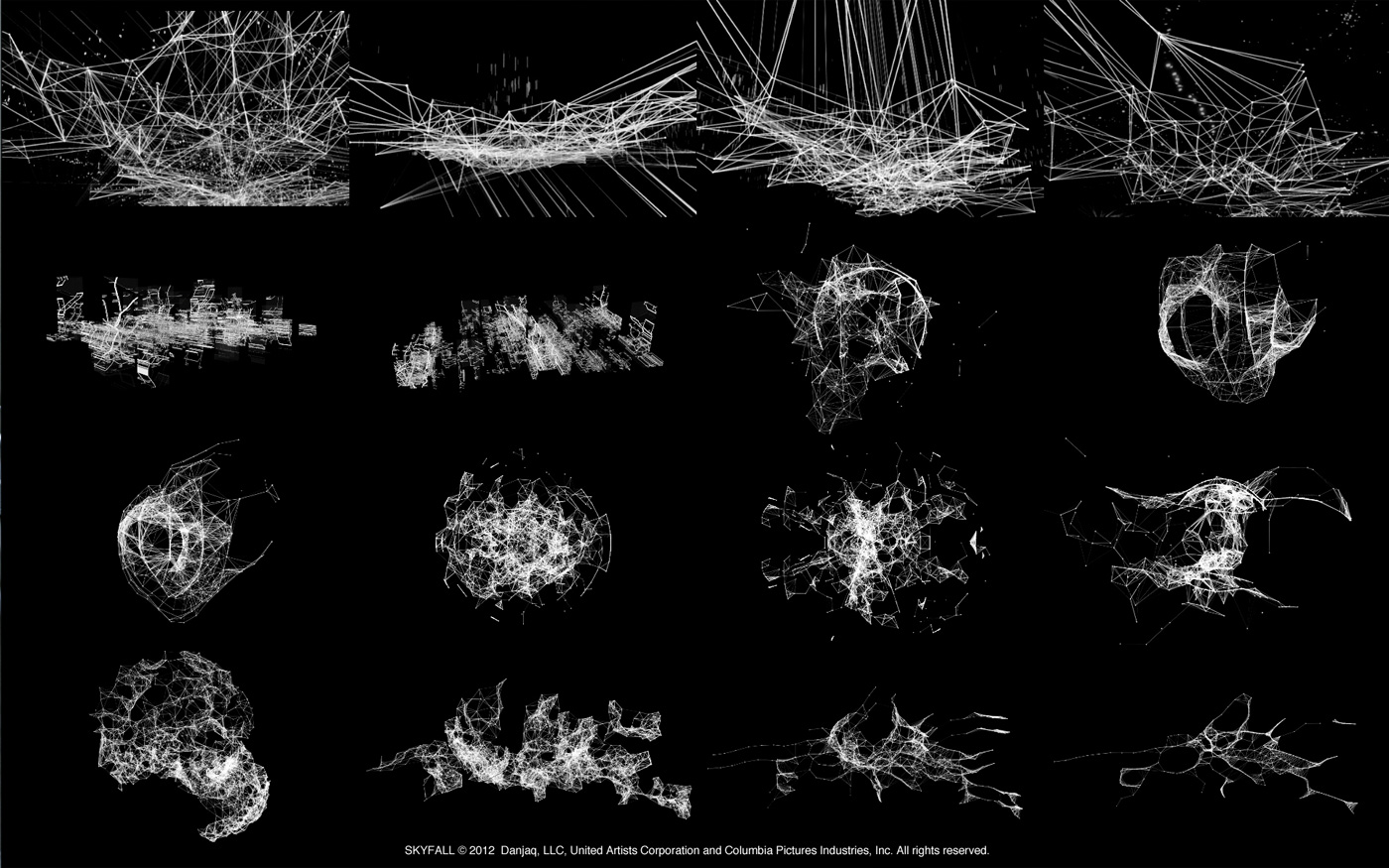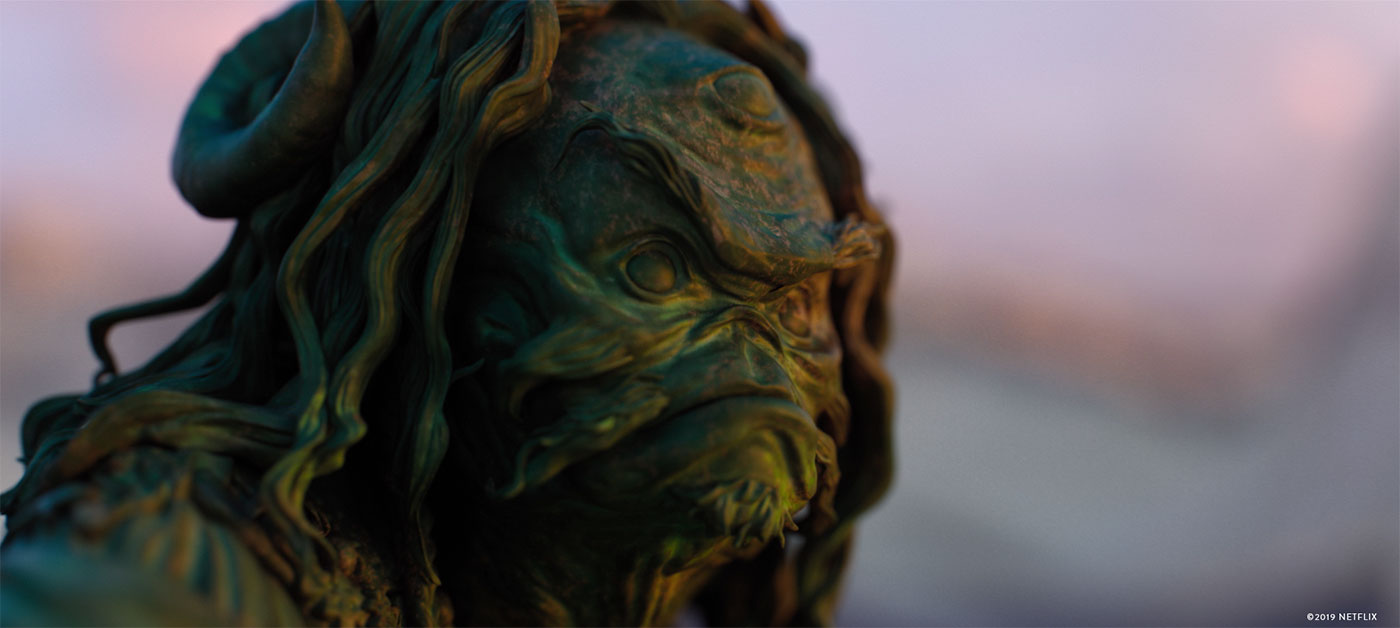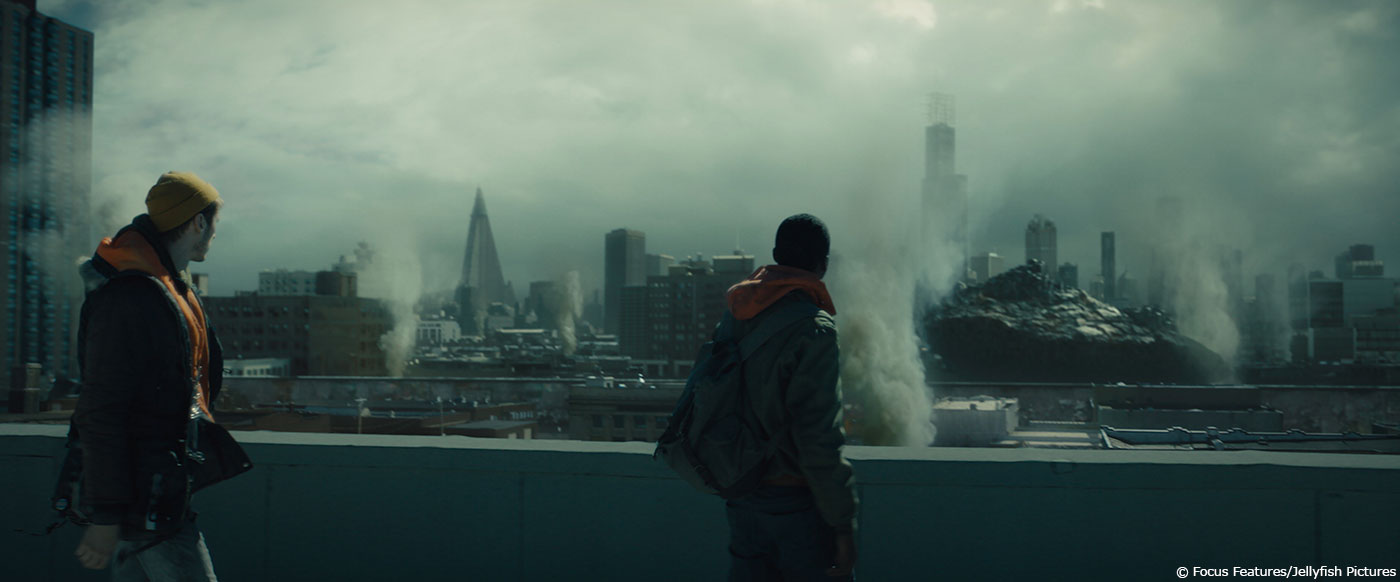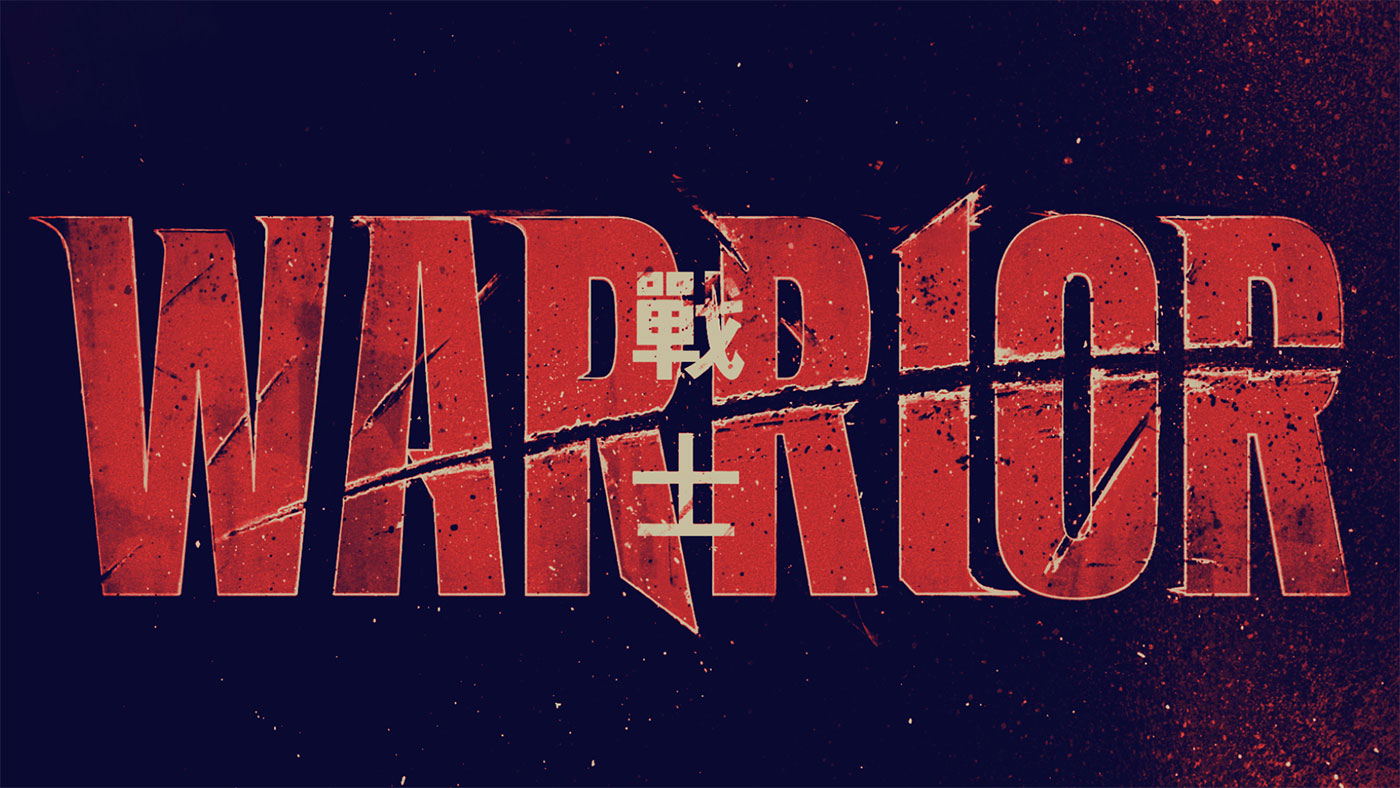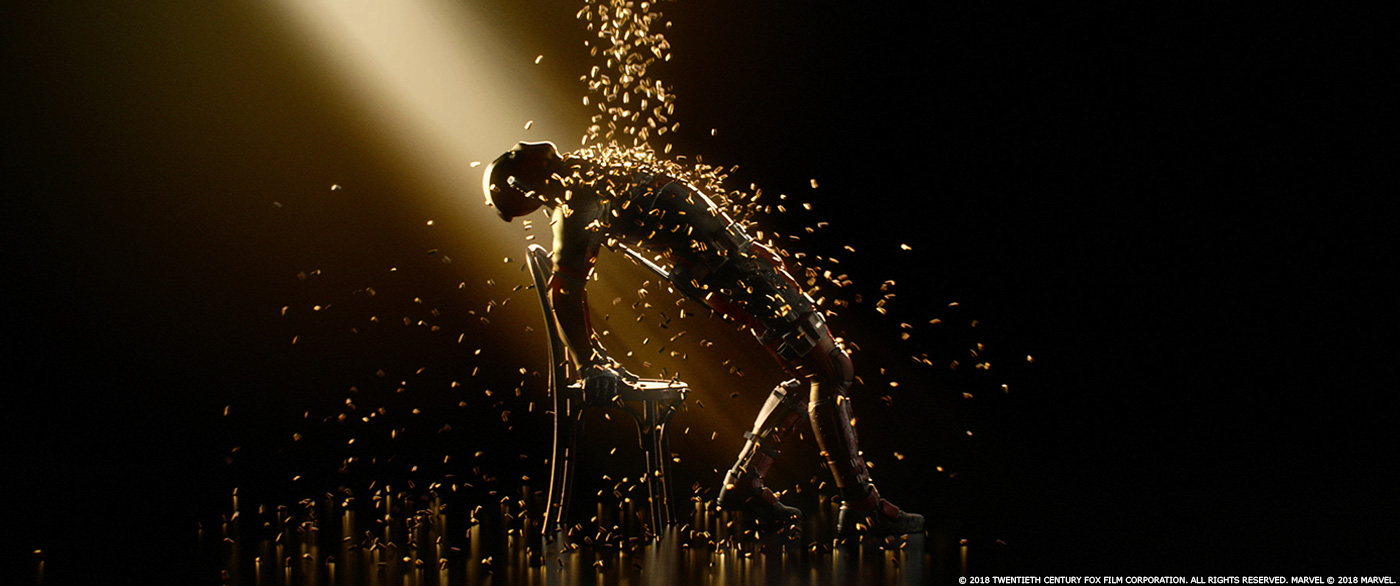Andrew Booth is a creative director who has worked on many feature films such as DIE ANOTHER DAY, HELLBOY, BATMAN BEGINS or THE DARK KNIGHT RISES and also video game like CRYSIS 2. He is the founder of Blind.
What is your background?
Art school: Foundation, BA honours degree in 3 Dimensional Design combined with film studies. My designs had to work physically. Not some fictitious concept that wouldn’t stand up to close scrutiny. The college work was always grounded in reality.
Can you tell us more about the studio BLIND?
BLIND is a Design & Moving Image studio for Films, Games and Brands. The studio’s vision is to develop solutions that have form and function. One of our key specialities is Computer Interface Design for film.
How did BLIND get involved on this show?
It was our 10 years of experience and credits that lead to us getting involved in the show. We had created Computer Interface Designs for all of Christopher Nolan’s DARK KNIGHT films. I had also worked on both DIE ANOTHER DAY and CASINO ROYALE. This led to a meeting with Sam Mendes.
How was the collaboration with Director Sam Mendes?
The collaboration with Sam Mendes was perfect. We both have a huge respect for the franchise. Sam was new to the world of Computer Interface Design and screen graphics. However he recognised the importance of the element within the narrative of the film. He was keen to do something new, to advance the way screen graphics are presented on film.
What have you done on this show?
We were essentially responsible for the graphic content on every type of screen used in the film: from huge 4K computer monitors in Q branch to Bond’s Sony Xperia phone.
What references and indications did you present to Director Sam Mendes?
Sam was very open to suggestion and our first step in the process was to present a snapshot of what Computer Interface Designs look like now or look like in the not too distant future. We both instinctively wanted to steer clear of all the gadgets we already have in our day-to-day lives. Look into your pockets we all have Smartphones / Tablets, etc. with slick floating graphics. We expanded in depth on how we would differentiate between real world and film fiction.
The solution was to ramp up design treatments based on real industrial displays that had a core function, then work these concepts into each set designed by Dennis Gassner the Production Designer. BLIND had also been experimenting with a number of visuals to communicate data in a more detailed and futuristic manner. Sam really got behind these initial tests and this gave us the springboard to leap forward….
Can you explain to us more about the creation of Computer Interface Design along with a step by step guide on how you create screen graphic content?
The step by step guide in the creation of the Computer Interface Design is about interpreting the script. What are the key narrative requirements of the screen graphic content? We then think, and sketch out ideas on paper. If you can draw and talk through the solution then, generally speaking it will work. We also conduct research to validate our ideas when presenting our creative solutions. As for the production process, we keep it simple. In broad strokes our pipeline starts with the initial build (previs) to get the story right, once approved, content is put together and composited using a number of 2D and 3D packages. We then bake the sequences, and output to final. Sequences are then broken down so that they run for a specific frame count.
Did you create screen graphic sequences that were used directly on-set?
For the sequences to be run on set we used a piece of proprietary software, with no loss of quality, to reduce the size of the files. A central server controlled a series of computers to play back the screen graphics. Bespoke programming was used for the more intricate, interactive sequences giving the actors something real and tangible to react too. Because we had already designed and conceptualised the computer graphics sequences during principal photography it provided us with a head start as we moved into post.
How did the work for Computer Interface Designs continue once in post?
Once in post we were not tied down by what is physically possible on set. It allowed us to have greater flexibility when creating the more complex screen graphic sequences. We adjusted the hero specific shots in conjunction with the actor’s performance to define the action from an editorial perspective. It gave Sam the opportunity to re-examine the work and tweak the content to serve the narrative of the story precisely.
How did you work with the other vendors?
Working with the vendors was a process co-ordinated by the VFX department. We produced rough comps with the graphics placed within the shots. We then reviewed these sequences with Sam who would comment on how the graphics worked within the scene. If required we would make adjustments to the sequence. Once the shots were approved: our rough comp, tiff sequences went to the various vendors with a set of detailed notes for finals.
What were the biggest challenges on this project and how did you achieve them?
On this project we had to face major challenges, the greatest being central to the performances of three main characters M, Q and Silva. It was really important to integrate the Computer Interface Designs and screen graphic sequences within these characters scenes. The script relies on the screen graphics driving elements of exposition so we really had to focus on getting the story right. Technically Q Branch scenes were going to be tricky from a production standpoint, as we needed to create sequences at 4K. Our solution here was to breakdown the story-points and work through systematically scene-by-scene and output only that which was required.
This was the first time Q, played by Ben Whishaw had appeared in the Daniel Craig Bond films. Q is such a beloved character so there was a degree of pressure on us to get this right. Historically it was the Bond villains who had the secret lair with large screens highlighting their plans for world domination. So in early conversations there was this playful idea to flip this notion around and give Q this kind of set with a department full of hi-tech screens. This certainly fitted with Sam’s idea of taking the house of Bond apart and re-arranging the furniture slightly for a modern world. For us at BLIND we really wanted to establish him as a redesigned Q for a computer-literate audience.
How many Computer Interface Designs / shots have you done and how long have you worked on this film?
200 designs / 75 post shots / 1 year later we had completed all Computer Interface Designs, screen graphics work on SKYFALL.
What was the size of your team?
The size of the team was dependent on what had to be achieved. Basically 4 core members: Thank you Ian Sargent, Shaun Yue, Joe White and Gabor Ekes, augmented to 10 at the busiest moments in the schedule.
What was your greatest achievement on the show?
It is one that will go unnoticed. It’s so subtle. The first time we see Silva he delivers a monumental monologue, a single unbroken shot, which heightens the tension of the scene. In post we created the Computer Interface Designs that added up to the longest amount of screen time we have ever had. For the majority of the scene the screen graphics just sit, tick over, a tiny heartbeat. When required the Computer Interface Designs highlight Silva’s mastery of technology and how he can throw the world into complete chaos with just a few keystrokes. Our work here was based on respect and response to Javier Bardem’s performance. An exercise in restraint.
What was your feeling to be part of this James Bond movie?
On my 7th birthday I was finally allowed to see a James Bond film at the cinema, THE SPY WHO LOVED ME. When the Lotus hit the water and became an underwater car I was hooked. Transfixed by the gadgets, I knew then that I wanted to work on these films. So for me personally the feeling of being part of this James Bond film is one of intense pride and accomplishment.
What do you keep from this experience?
It was by far the most immersive and enjoyable experience we have ever had on a film. For BLIND, it has been a great journey from the initial ideas for the Computer Interface Designs in Q Branch, highlighting the subterranean London, to conceptualising Silva’s viral playfulness when sending M weird LulzSec-ish taunts. It has always been the knowing that our work was vital to the narrative process.
A big thanks for your time.
// WANT TO KNOW MORE?
– BLIND: Official website of BLIND.
© Vincent Frei – The Art of VFX – 2012


